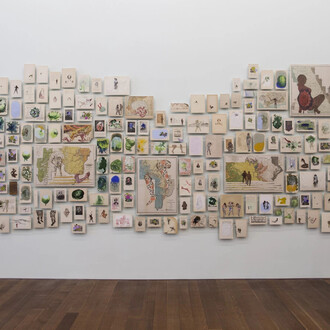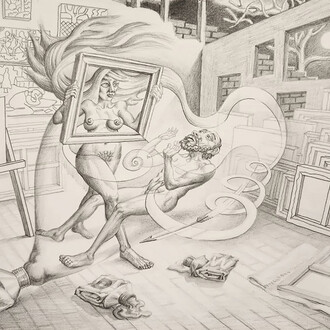Explore cultural diversity across thousands of islands in the Pacific Ocean. The countries collectively referred to as the Pacific Islands—including New Guinea, New Zealand, Hawaii, the Marshall Islands, the Philippines, and many more—are separated by thousands of miles of ocean. The people who live on these islands speak many different languages and observe vastly different historical traditions and modern ways of life.
In the Regenstein Halls of the Pacific, visitors can explore the history and culture of some of these islands through hundreds of contemporary and historical objects on display, including masks, wood carvings, and instruments.
These items, alongside stories shared by Pacific Islanders themselves, showcase the geographic and cultural diversity of this region.
Many objects in our collection from the Pacific Islands date from the 1890s and early 1900s, and they were brought to the Field Museum by curators decades ago. More recently, members of our staff have traveled to Fiji, the Philippines, Samoa, and Tonga, among other islands, to conduct outreach. By forging new relationships, we can share our collection more widely, learn more about the items we have, and are able to bring contemporary objects that complement historical collections to the Field.
Staff also work with members of the Filipino American community in Chicago to learn about objects collected decades ago. Community members continue to share their understanding of objects in the Field’s collection and helped to select the items on display in the first gallery of the Regenstein Halls of the Pacific.
Located within the Regenstein Halls, the Regenstein Conservation Laboratory is a 1,600-square-foot conservation and collections management facility, where museum staff work to conserve objects from our Pacific collections and beyond.
This active lab is also a center for imaging, including photography and segmenting CT scans of mummies, laser scanning, photogrammetry, and 3D printing.
Viewable to the public, Regenstein Lab is testament to our commitment to protecting the more than 1.5 million items in our anthropology collections for future generations.
















